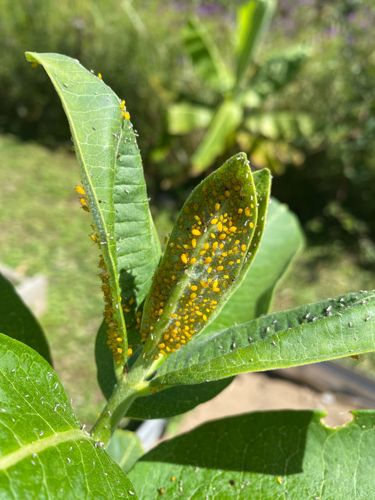Oleander Aphid, Milkweed Aphid
Scientific Name: Aphis nerii
Order & Family: Order: Hemiptera, Family: Aphididae
Size: Typically 1.5 to 2.5 mm (0.06 to 0.1 inches) long.

Natural Habitat
Found on various host plants, particularly milkweed, common in gardens, meadows, roadsides, and any area where their host plants grow.
Diet & Feeding
Plant sap, specifically from the phloem of host plants like milkweed (Asclepias species) and oleander (Nerium oleander). They use their piercing-sucking mouthparts to extract nutrients.
Behavior Patterns
Aphids reproduce rapidly, often through parthenogenesis (asexual reproduction), leading to large populations quickly. They secrete a sugary substance called honeydew, which can attract ants (who protect the aphids from predators) and lead to sooty mold growth. Winged forms can develop when colonies become overcrowded or when host plants decline, allowing them to disperse to new plants.
Risks & Benefits
Risks: Can cause significant damage to host plants by sapping nutrients, leading to stunted growth, distorted leaves, and reduced flowering/fruiting. The honeydew they produce can lead to sooty mold, which impairs photosynthesis and is aesthetically undesirable. Benefits: They serve as a food source for various beneficial insects, including ladybugs, lacewings, and hoverfly larvae, which helps in natural pest control.
Identified on: 9/1/2025